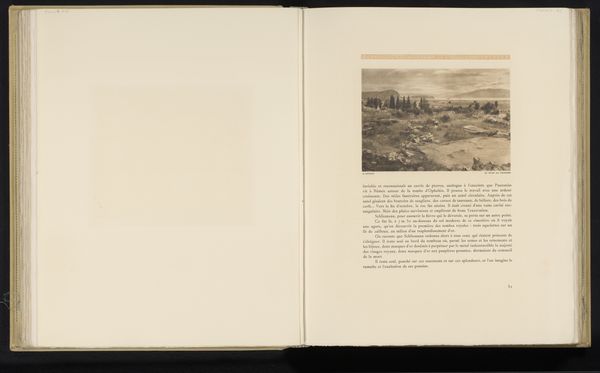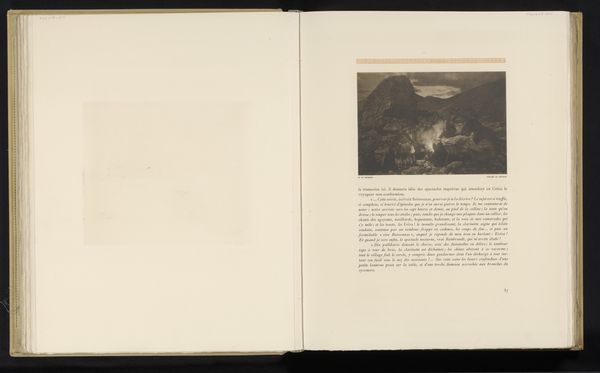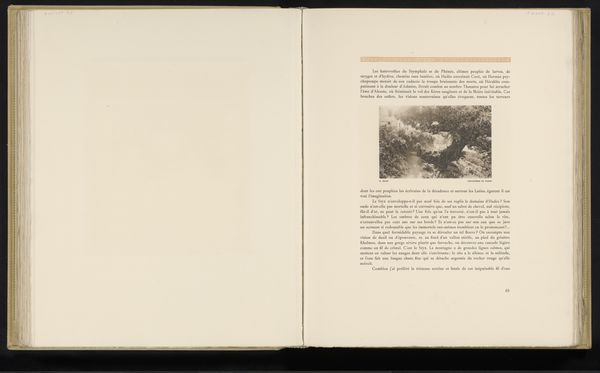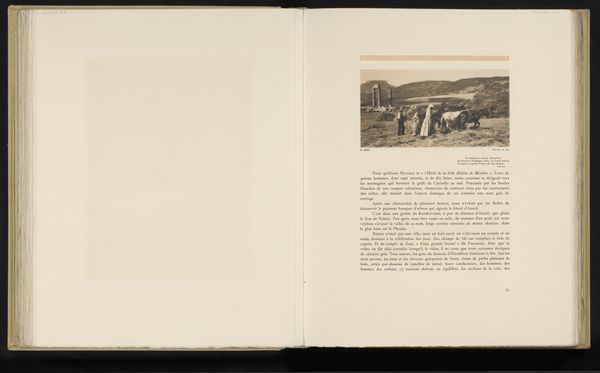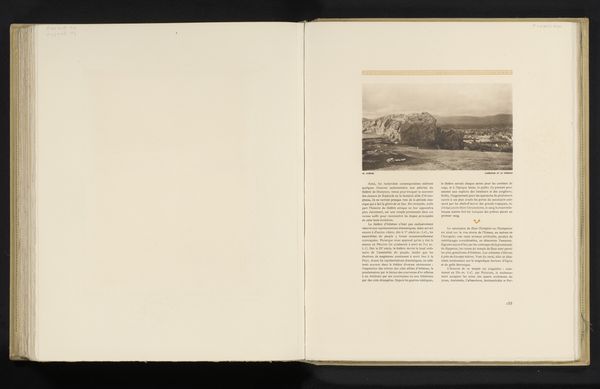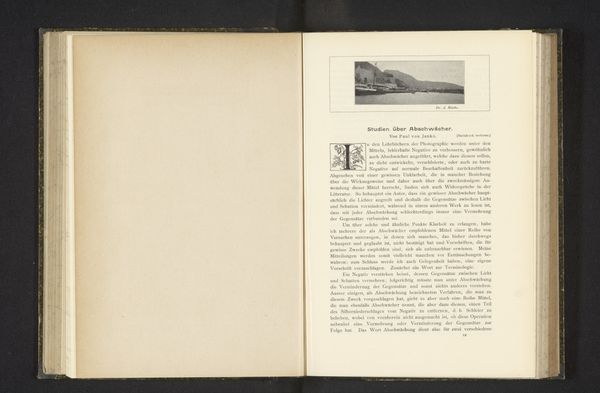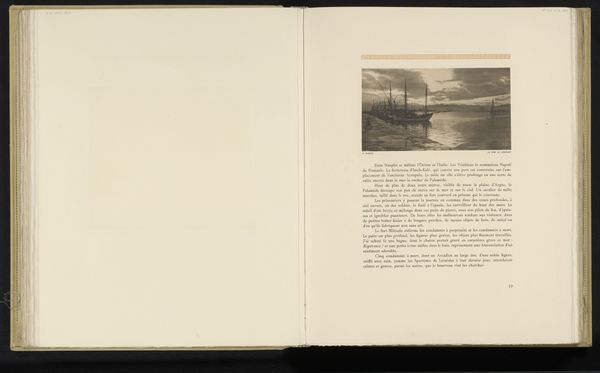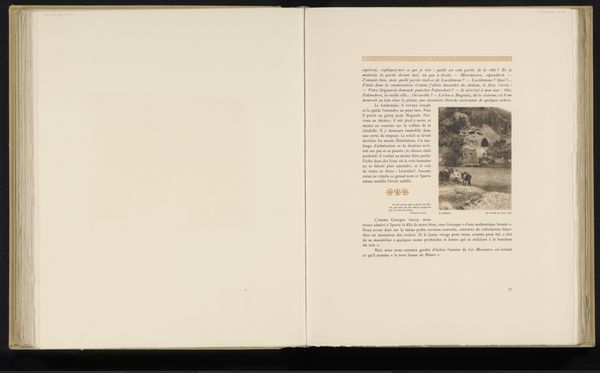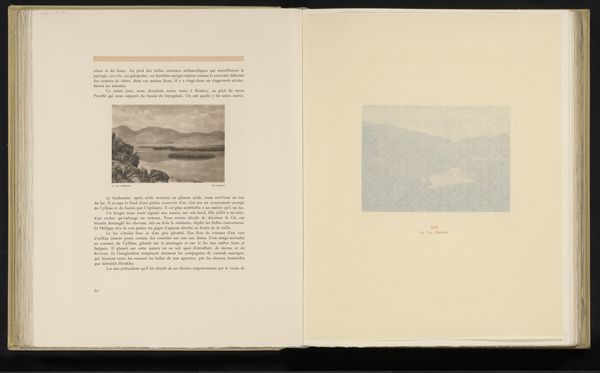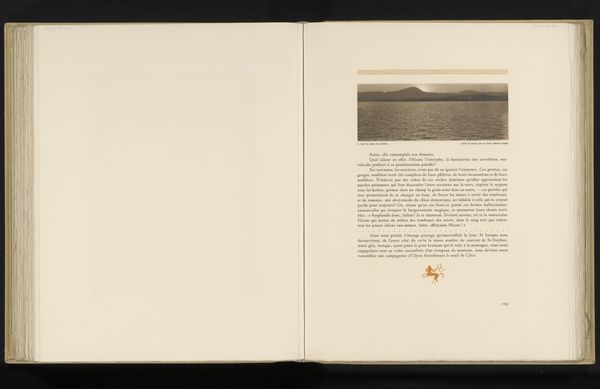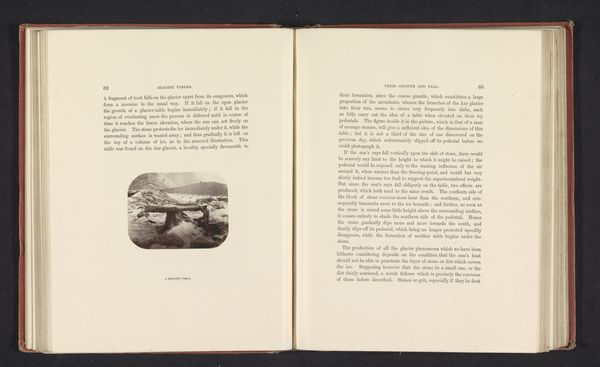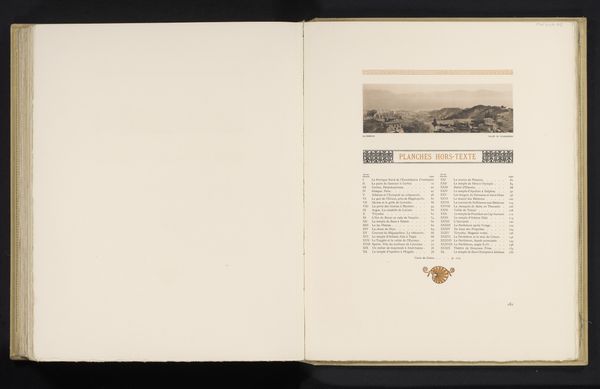
photography
#
landscape
#
river
#
photography
#
mountain
Dimensions: height 122 mm, width 225 mm
Copyright: Rijks Museum: Open Domain
Editor: So, this photograph is called "Gezicht over de Eurotas, in de verte de Taigetos" by Frédéric Boissonnas, dating back to before 1910. It's a landscape photograph featuring a river and distant mountains. There's a kind of serene stillness to the whole scene. What jumps out at you when you look at it? Curator: What immediately strikes me is the stark contrast created by the composition itself. Notice how the horizontal lines—the riverbank, the river, the mountain range—divide the image into distinct planes. The limited tonal range of the black and white image flattens the perspective, drawing attention to the photograph's surface, its materiality as a printed image. The almost severe geometric arrangement creates a formal tension, don't you think? Editor: I see what you mean. It’s like the photographer is deliberately stripping away any emotional content, leaving us with just the bare bones of the scene. It’s certainly not a romanticized landscape. Curator: Precisely. Observe how the photographer utilises the monochromatic palette. It isn't just about representing what was seen but emphasizing gradations of light and shadow, further reducing form to fundamental elements. Do you notice any play with textures in the composition? Editor: Yes, the soft focus gives everything a kind of dreamy quality, almost blurring out detail in both the water and mountains. Curator: Agreed, this technique enhances the surface quality, almost contradicting its function as a mere depiction of place. Through this specific interplay between representation and its very essence, what narrative might the artist be aiming to convey? Editor: So, it’s less about the literal place and more about the elements, the form, and the process of representation itself. Fascinating. Curator: Indeed, looking through that lens helps us grasp that artwork from an objective standpoint.
Comments
No comments
Be the first to comment and join the conversation on the ultimate creative platform.
